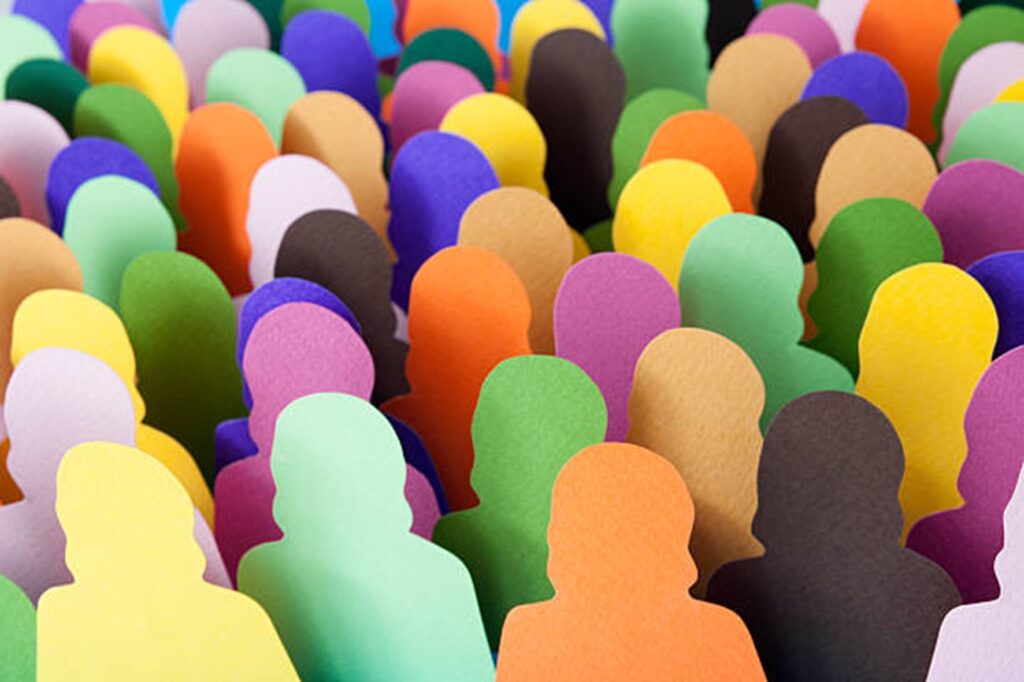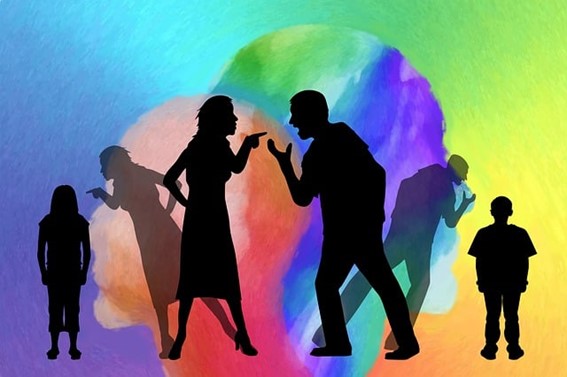(Blanca Barredo Gutiérrez)
A. Definition of gender
Gender, as defined by the World Health Organization, is a set of ideas and social practices that They define what is considered appropriate for men and women in a given society. These concepts They are not rooted in biology, but are social constructs that are learned and reinforced throughout life, especially through family and education. Gender socialization involves the transmission of roles and stereotypes that dictate how individuals should behave according to their biological sex. These roles often manifest themselves in everyday aspects such as clothing, games, and household chores, and can perpetuate power inequalities between the genders.
B. Importance of the gender perspective in mediation

The gender perspective recognizes these inequalities and seeks to understand how biological differences between the sexes translate into social inequalities.. The patriarchal system, in particular, has been identified as a factor that contributes to gender oppression, transforming sexual differences into power hierarchies. The notion of gender as a relational concept is crucial to understanding these dynamics, as it highlights the relationships of power and oppression that exist between genders.
II. Gender inequalities and social roles
A. Interaction between biology and social constructions
Gender inequalities are manifested in the social roles expected of men and women, and are often expressed through gender stereotypes. These stereotypes may assign characteristics such as submission and passivity to women, and dominance and aggression to men. Such expectations can limit individual freedom and perpetuate discrimination. Understanding and challenging these gender constructs are essential steps towards a more equal and just society, where people can express themselves freely without being constrained by restrictive gender norms.
B. Gender stereotypes and power inequality
Masculinity and femininity, as sociocultural constructions, have traditionally been defined by a series of characteristics and specific roles expected of men and women. These expectations have been deeply ingrained in most societies and have influenced the perception of what it means to be a man or a woman. Hegemonic masculinity, for example, has promoted an image of the man as strong, dominant and emotionally reservedor, while that femininity has been associated with passivity, emotionality and dependence. However, these notions have been challenged and are constantly evolving.
III. Transformation of gender roles
- Evolution of masculinity and femininity

With the passage of time and changes in social dynamics, such as growing gender equality, the fight for women's rights and the recognition of sexual and gender diversity, traditional roles have begun to transform. The incorporation of women into the labor market and the questioning of gender roles have contributed to a more fluid and less binary view of masculinity and femininity. This has allowed people to adopt a wider range of gender behaviors and expressions. without being limited by traditional expectations.
- Influence of the feminist movement

The transformation of gender roles has also been influenced by the feminist movement, which has worked tirelessly to dismantle patriarchal structures and promote equality. This movement has questioned gender norms and advocated for a society where people can express themselves freely, regardless of their gender. As a result, we are witnessing an era in which gender identity and gender expression are understood as more complex and multifaceted aspects of the human experience.
- Gender Diversity and Gender Expression

The blurring of sex roles is a reflection of a society moving towards greater acceptance of diversity and individuality. No longer are all men or all women expected to conform to a static set of characteristics or behaviors. Instead, It is recognized that each person is unique and? Gender identity can be a spectrum rather than a binary category. This cultural evolution is allowing people to live more authentically and fulfilling lives, freeing themselves from the restrictions of prescribed gender roles.
Ultimately, the transformation of gender roles is a testament to social change and the ability of societies to adapt and grow. As we continue to question and redefine what it means to be a man or a woman, we can hope to see a future where gender equality is the norm and where people are valued for their individual qualities rather than their conformity to gender roles. outdated genre. Society benefits from this openness and flexibility, as it allows all individuals to contribute fully to their potential, without the barriers of gender stereotypes.
IV. The role of micromachismos and cultural heritage in the construction of gender roles
A. Definition and manifestations of micromachismos
Micromachismos, a term coined by Luis Bonino in 1998, refer to to subtle everyday practices that perpetuate gender inequality, often going unnoticed due to their less obvious nature compared to more explicit machismo. These practices can range from derogatory comments disguised as humor to behavioral expectations based on gender stereotypes.. The identification and questioning of micromachismos are crucial steps towards gender equality, since they make it possible to make visible and challenge the social norms that subjugate women in everyday situations.
B. the cultural heritage of romantic love

The cultural heritage of romantic love in Spain, as described in the research of Carlos Yela in 2000, has contributed to the construction of an ideal of couples and marriage that emphasizes passion and fidelity as fundamental pillars. However, this ideal can have implications for women's autonomy and participation in the public sphere, by reinforcing an identity focused on the domestic sphere and family care. Although gender roles have evolved over time, The influence of these cultural norms persists, affecting family organization and behavioral expectations within couple relationships.
- Impact on contemporary family organization

Contemporary family organization continues to be a reflection of the interaction between these cultural factors and gender power dynamics. As women continue to gain ground in public and professional life, gender roles within the family are also transitioning.. This change offers an opportunity to redefine couple and family relationships more equitably, recognizing and valuing the contributions of all members, regardless of gender. Awareness and rejection of micro-machismo, along with a critical reflection on the cultural heritage of romantic love, are essential to move towards a more just and inclusive society..
The gender pay gap is a manifestation of gender inequality in the workplace. This gap refers to the difference in average compensation between men and women, which is often due to the sexual division of labor. Traditionally, women have been expected to perform domestic or caring tasks, which are generally unpaid if carried out in the home. On the other hand, the tasks assigned to men are usually related to the productive sphere, which is linked to the economy, politics and social life, and therefore, they are paid activities.
Regarding the labor perspective, education has been a determining factor in access to employment opportunities. Although in the past it could be argued that women held lower-paid jobs due to a lower level of education, Today, the situation has changed. Women have caught up with and, in many cases, surpassed men in terms of educational attainment.. However, Women often choose professions or careers that are less economically valued, contributing to the persistence of the wage gap.
Furthermore, there are aspects of inequality that are not immediately evident. These include prejudices and work dynamics that exclude women, as well as the possibility of motherhood, which can limit women's opportunities at work. These factors contribute to small actions or attitudes that, although they may seem insignificant individually, collectively perpetuate gender inequality.
V. The gender perspective in mediation

A. Gender equity in mediation
The gender perspective in mediation processes is essential to guarantee equity and justice in conflict resolution. By considering how gender differences affect interactions and perceptions, the mediator can better address the power dynamics and biases that are often present in disputes.. This perspective helps identify and challenge gender norms and stereotypes that may influence the behavior and expectations of the parties involved. Doing so promotes a more inclusive environment and recognizes the diversity of experiences and needs.
Gender-responsive mediation not only focuses on equality between women and men, but also considers the complexities of gender identity and sexual orientation. This is crucial in a society that is constantly evolving its understanding of gender identity. By integrating this perspective, the mediator can facilitate conversations that respect and validate individual experiences, while working toward solutions that reflect justice and gender equality.
B. Address power inequalities and gender roles in mediation
The gender perspective in mediation can reveal how social structures and power inequalities affect personal and professional relationships.. This allows mediators to address not only surface issues, but also the underlying causes of conflicts. By recognizing these influences, more effective mediation strategies can be developed that take into account the totality of a person's circumstances and not just the immediate situation.
C. Promote gender equality in mediation
The gender perspective in mediation is an approach that seeks to recognize and address gender inequalities that can influence conflicts and their resolution. By incorporating this perspective, mediators can identify and challenge gender norms and beliefs that are often embedded in society and that can perpetuate discrimination and injustice. This implies a commitment to gender equality and to the creation of spaces for dialogue that respect and value the experiences and needs of all people, regardless of their gender..
Gender-responsive mediation also recognizes that the experiences of women and men can differ significantly due to unequal power structures. Therefore, this approach not only seeks to resolve the present conflict, but also contribute to broader social change that promotes gender equality. By doing so, access to justice can be improved for those who may be in vulnerable situations and the deeper roots of conflicts can be addressed. On the other hand, The gender perspective in mediation can help detect and address situations of gender violence that might otherwise go unnoticed. This is crucial, as gender violence is often hidden and normalized due to the same beliefs and stereotypes that gender perspective seeks to challenge..
SAW. The principles of neutrality and impartiality in mediation
- Neutrality and impartiality a pillar of mediation
The principles of neutrality and impartiality are fundamental in the mediation process, as they guarantee fair and equitable treatment for all parties involved. Neutrality refers to the absence of prejudices or preferences on the part of the mediator, while impartiality implies an equidistant distance from the interests of the parties. These principles are essential to maintain trust in the mediation process and ensure that solutions arise from the parties themselves and not from outside influences.
Neutrality in mediation is a complex and multifaceted issue. Traditionally, neutrality has been considered a pillar of mediation, where the mediator must act without allowing his own values and prejudices to influence the process. However, as Merino points out, This classical conception of neutrality is practically unattainable, since all human beings have their own belief systems and prejudices that inevitably affect their interactions. Instead of aiming for absolute neutrality, which might inadvertently favor the values of the dominant culture, some people mediators advocate a more conscious approach to one's own culture and ideology. This It involves a recognition of how these personal factors can influence the mediation process and an effort to minimize their impact.
Neutrality in mediation is not a static concept, but one that must be constantly re-evaluated and adjusted based on the realities of each situation. Effective mediation requires a deep understanding of impartiality and neutrality, as well as the ability to navigate and balance the complexities inherent in human relationships and social conflicts.
B. Co-mediation, a strategy to address power asymmetry
Co-mediation is another effective technique, especially when it is made up of mediators of different genders, which can help balance power dynamics and ensure that the parties feel represented. This diversity in mediation reflects a broader range of perspectives and promotes an environment of equality and respect.
VII. Effective mediation and power imbalances in family relationships

- Power equity crucial aspect
Equality of power in family mediation is a crucial aspect of ensuring a fair and equitable process. The neutrality and impartiality of the mediator, as Daniel J. Bustelo points out, is essential to prevent pre-existing power dynamics from influencing the outcome of the mediation. The mediator's awareness of his or her own beliefs and those of the parties involved allows any power imbalance to be identified and addressed. This is especially relevant when considering gender roles, which can affect the perception and behavior of participants in mediation.
Traditional gender roles often assign different expectations and responsibilities to men and women, which can lead to an unequal distribution of power within family relationships. In conflict situations, These differences can be exacerbated, causing one party to feel less empowered to express their needs and desires. Therefore, it is essential for the mediator to recognize and address these dynamics to promote an environment where all voices are heard and valued equally. We must highlight, as Daniel J. Bustelo states, the importance of listening in mediation.
Additionally, family mediation should be a safe space where difficult topics can be openly discussed without fear of retaliation or judgment. Abusive behaviors, which may be more visible in the private sphere, must be identified and managed carefully to protect vulnerable parties and ensure that mediation does not perpetuate or reinforce these dynamics. Therefore, Power equity is a pillar of effective family mediation. Requires a conscientious and skilled mediator who can navigate the complexities of human relationships and gender roles.. In doing so, mediation can provide a dispute resolution that is not only fair, but also empowers the parties.
- Money as a means to exercise power
Money has been an instrument of power since time immemorial, acting as a means to exert influence and control in various social and political spheres. The quote from Bustelo (1995) reflects the perspective that control of money, and therefore power, has historically been dominated by men, which has contributed to gender inequality in terms of access and management of economic resources.. This power dynamic not only affects gender equality, but also extends to the socioeconomic structure. broader, where money can influence political decisions, shape public opinions. The relationship between money and power is complex and multifaceted, encompassing economic, psychological and social aspects that define human interaction and the organization of our societies.. In the modern era, the discussion about the influence of money in politics and society remains of vital importance, as decisions about its distribution and administration have profound implications for democracy and economic development.
- Responsibilities at home
The evolution of man's role as provider towards a more equitable distribution of domestic responsibilities reflects a significant change in family dynamics contemporary. This change is driven by a growing recognition of the importance of gender equality and co-participation in all spheres of life, including work and home.
Including gender training in mediation educational programs and other related fields is a crucial step in fostering a deeper understanding of these dynamics and promoting more inclusive practices. As society moves towards equality, the traditional concept of provider is transforming, paving the way for more flexible and democratic family models that celebrate and support the diversity of roles and contributions of each individual. Co-mediation emerges as a valuable tool in this process, offering a space where both genders can feel understood and their perspectives valued.
- Emotions and power dynamics in family relationships

Mediation, as a conflict resolution process, addresses the complexity of power dynamics and emotions that arise in disputes, especially those involving family and couple relationships. Sensitivity and the ability to manage emotions are crucial in this context, as they can significantly influence the balance of power between the parties. Bustelo's perspective highlights the importance of recognizing and managing emotions related to the loss or separation of children, an aspect that can be particularly challenging for parents who have not been as involved in parenting.
Mediation is an art that requires not only technical knowledge, but also deep empathy and interpersonal skills. Mediators act as impartial facilitators, helping parties communicate effectively and find common ground. The key to success in mediation lies in the mediator's ability to understand the emotions and perspectives of each party, and to guide the conversation toward solutions that respect the interests and needs of all. By addressing difficult emotions and power dynamics with sensitivity and respect.
- Influence of family organization and generational bias

Family mediation is a complex process where gender roles and traditional family structures can significantly influence. Mediators, by being aware of these dynamics, can work to minimize their impact and promote equity. Understanding how generational bias can affect participants' expectations is crucial to addressing concerns effectively and sensitively. By recognizing and adapting to evolving social norms and gender expectations, mediators can facilitate more open and fair dialogue, ensuring that all voices are heard and valued equally. This adaptive approach not only reflects changes in society, but also promotes conflict resolution in a way that respects the diversity of experiences and perspectives.
VIII. Addressing asymmetry in mediation
A. Recognition and management of power dynamics
In the realm of mediation, power asymmetry can be a significant challenge that requires meticulous attention on the part of the mediator. It is essential that the mediation professional has a deep understanding of power dynamics and is equipped with a set of skills and techniques to manage them appropriately. This includes the ability to detect and address any form of bullying or domination, ensuring that all parties have the opportunity to express themselves freely and are heard with equal consideration. Impartiality and neutrality are cornerstones in this process, allowing the mediator to facilitate a safe and equitable environment where a fair and mutually beneficial resolution can be reached. In the end, the goal is for all parties to feel empowered to negotiate effectively, maintaining fairness and mutual respect at all times.
B. Training in gender, culture and social dynamics issues
The training and skills of a mediator are crucial to effectively manage the power dynamics in conflict management. Detecting subtle signs of dominance and understanding symbolic codes are essential to maintaining a fair and equitable process. Training on issues of gender, culture and social dynamics helps mediation professionals identify and address asymmetries, especially in situations of gender disparity, economic dependency or family hierarchies. In addition, the creation of a safe and respectful environment, where open communication is promoted and necessary breaks are respected., is essential for all parties to feel heard and valued. This comprehensive approach not only protects the interests of those involved, but also strengthens the integrity of the mediation process.
IX. Conclusions
Mediation with a gender perspective is a valuable tool in promoting equity and social justice. By incorporating this perspective, mediators can address unequal power dynamics and offer a more inclusive and representative process.. Co-mediation, with teams of mediators of different genders, can improve the quality of the process by providing a variety of perspectives and fostering an environment of greater equity.
Neutrality and impartiality are essential to maintain the integrity of the mediation, ensuring that the process is carried out with professionalism and without personal influence. These principles are essential to creating a safe space where all parties feel heard and respected, which is crucial to resolving conflicts effectively and fairly.
X. Bibliography
Bustelo, DJ (1995). Interdisciplinary Family Mediation. Madrid: Essay
Merino, C. (2013). Family mediation in asymmetric situations: conflict management processes with episodes of violence, drug addiction, mental illness and power imbalance. Madrid: Editorial Reus.
If you want to train in mediation, choose to enroll in the number 1 school in the mediation sector.




